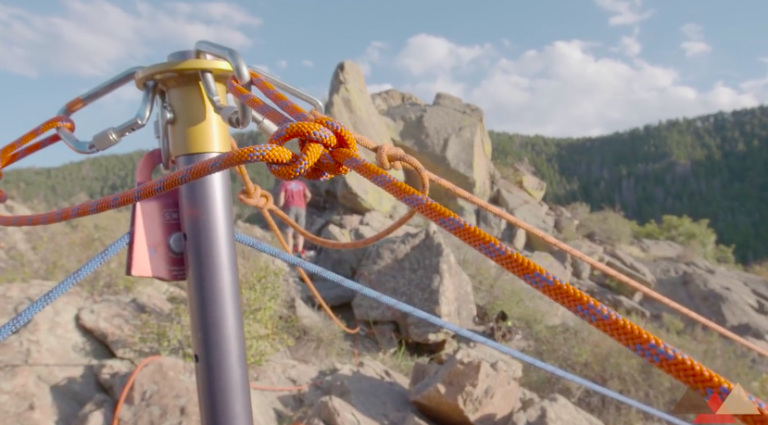The gin pole monopod stay is a powerful and versatile tool in technical rope rescue and rigging applications. Its ability to support loads in high-angle and confined space environments makes it an indispensable component for professionals looking to elevate their efficiency and safety.
In this blog, we explore the applications, setup, and essential components of a gin pole monopod stay, transforming complex rigging challenges into streamlined solutions.
What is a Gin Pole Monopod Stay?
A gin pole monopod stay is a single-leg rigging system anchored and stabilized by guy lines or stays. It acts as a high directional, allowing rescuers to redirect loads, support lifting operations, and mitigate rope abrasion. Its minimalistic design is particularly valuable in confined spaces or locations where larger systems, such as tripods, are impractical.
Applications in Rescue and Rigging
- Load Lifting and Lowering:
Used as a high directional to reduce friction and improve the angle of operation. - Confined Space Entry:
Provides a compact and stable anchor in areas with limited space. - Edge Transitions:
Allows smooth transitions for loads or personnel over edges.
Key Advantages of the Gin Pole Monopod Stay
- Compact and Portable:
Easy to transport and set up, especially in remote or constrained environments. - Minimal Anchor Points:
Requires fewer anchor points compared to larger systems like A-frames or tripods. - Improved Efficiency:
Reduces edge friction, making hauling and lowering operations smoother. - Customizable Setup:
Guy lines or stays can be adjusted to ensure stability on uneven terrain.
How to Set Up a Gin Pole Monopod Stay
1. Secure the Base
The base of the monopod should be placed on a stable surface, with anchors to prevent slipping. Use anchor plates or slings for additional stability.
Related Resource:
The Importance of Anchor Systems in Rescue Operations
2. Stabilize with Guy Lines
Attach guy lines or stays to the monopod and secure them to anchors at equal distances. Tension the lines to maintain stability and prevent lateral movement.
Key Gear:
3. Incorporate a High Directional Pulley
Install a pulley at the top of the monopod for smooth rope travel. Ensure it’s compatible with the load and rope diameter.
Key Gear:
4. Test and Adjust
Simulate the load to test the system’s stability. Adjust guy line tension and anchors as needed to optimize performance.
Gear Recommendations for a Gin Pole Monopod Stay
- Anchors and Rigging Plates
- Guy Lines and Tensioning Tools
- Pulleys and Ropes
- Connectors
When to Use a Gin Pole Monopod Stay
The gin pole monopod stay is most effective in scenarios where portability and adaptability are key. Ideal use cases include:
- Urban and industrial rescues.
- Tower and confined space operations.
- Situations requiring minimal gear and quick deployment.
Further Learning
For more in-depth rigging techniques and applications, explore these resources:
- High Angle A-Frame Litter Raise and Lower with One Attendant
- Collaborative Precision: Mastering High-Angle Rescues with Dual Rope Systems
- Understanding Mechanical Advantage Systems
Conclusion
The gin pole monopod stay is a versatile and efficient tool for professional rescuers and rigging enthusiasts. With its compact design, minimal anchor requirements, and adaptability, it’s a go-to solution for challenging environments. Equip yourself with the right gear and techniques to harness the full potential of this system.
Peace on your Days
Lance










